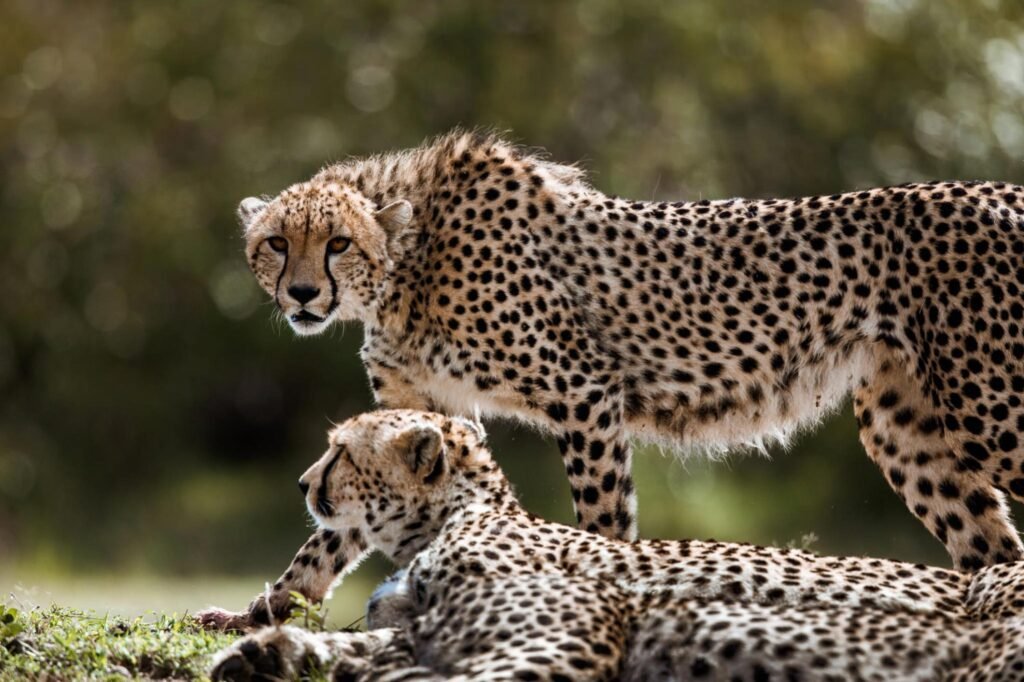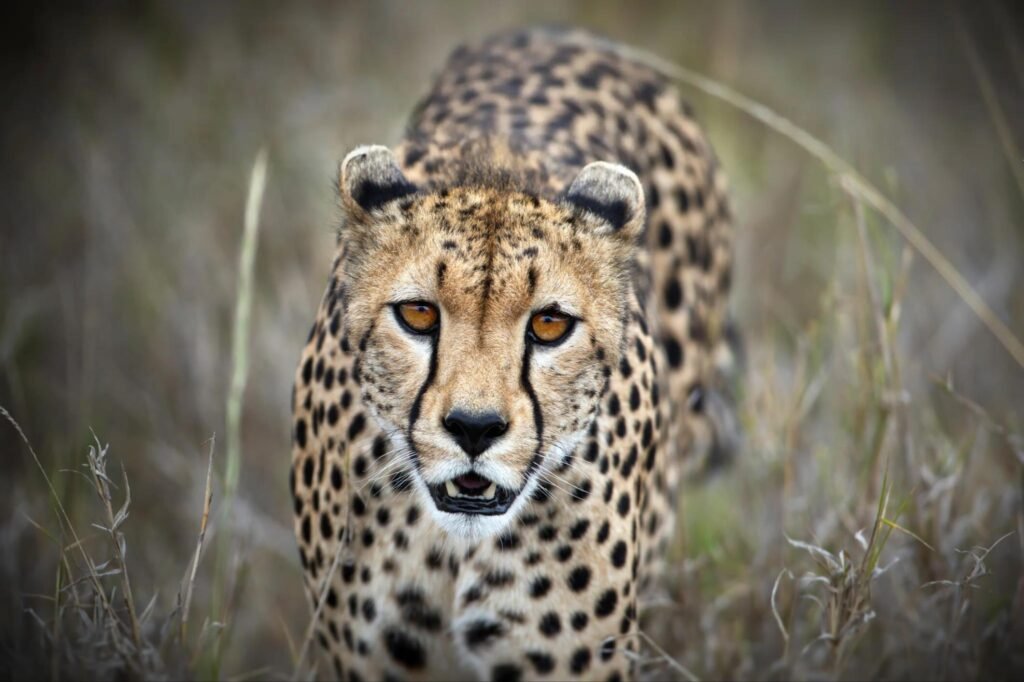
The cheetah, Acinonyx jubatus, is renowned as the fastest land animal, capable of reaching speeds of over 100 kilometers per hour in short bursts. This iconic big cat is characterized by its slender body, long legs, a distinctive spotted coat, and black “tear marks” running from its eyes to its mouth, which are believed to help reduce sun glare during hunts. Unlike other large felines, cheetahs have semi-retractable claws that act like running spikes, providing extra grip. They primarily inhabit the grasslands and savannas of Africa, with a small, critically endangered population remaining in Iran. Cheetahs are diurnal hunters, typically preying on small to medium-sized ungulates like gazelles and impalas, often hunting alone or in small coalitions of males.

Cheetahs are vital to the health of their ecosystems as apex predators. By preying on herbivores, particularly the old, sick, or young, they help to maintain healthy and robust prey populations, preventing overgrazing and the potential degradation of vegetation. This regulation of herbivore numbers ensures that plant life can thrive, which in turn supports a wider array of species, from insects to other larger animals. The presence of a healthy cheetah population serves as an indicator of a well-balanced and biodiverse environment. Their role in the food web contributes to the overall stability and resilience of the savannas and grasslands they inhabit, making their conservation crucial for the broader ecological landscape.
Every day, wild cats around the world face threats like habitat loss, poaching, and natural climate progression. But hope isn’t lost. With your support, we can protect these majestic animals and preserve their habitats.
Join our growing community of wildlife champions and help create a safer future for all 40 wild cat species.
Zoo-EV is a nonprofit organization dedicated to the protection and preservation of the world’s 40 wild cat species through education, community engagement, and conservation initiatives. Zoo-EV is recognized as a 501(c)(3) tax-exempt organization by the IRS, with the Employer Identification Number (EIN) 88-3636567.